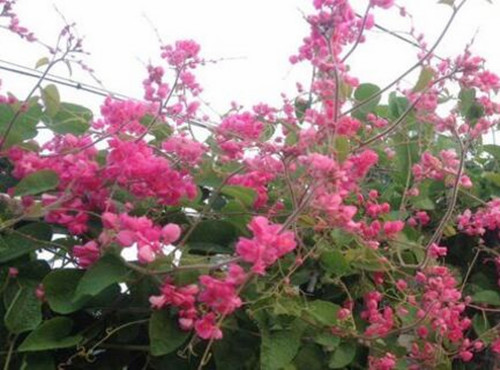When will the cotton of Malvaceae be planted? How many months did you get? (notes before sowing)
Cotton is the seed fiber of cotton genus of Malvaceae, its origin is subtropical. It was introduced into China at the end of the 19th century and has been widely cultivated in cotton-producing areas all over the country. When will cotton be planted? How many months did you get?
Planting time of cotton
Due to the different weather and climate in different regions, the cotton planting time is also different, generally speaking, the cotton planting time is about April of each year. Cotton in China is divided into three major cotton-producing areas, they are the Yellow River Basin, the Yangtze River Basin and *. The sowing time of the Yellow River and Yangtze River basins is in March and April of each year (the specific time is related to the variety, latitude and other factors). * the sowing time of cotton is between April and May, and the mature picking time of cotton is September and October. In fact, since March, farmers began to buy cottonseed to grow cotton.

Maturity and harvest time of cotton
Cotton generally takes 75-100 days from budding to maturity, and the cotton harvest time varies slightly with different planting areas.
1. The florescence of cotton in the middle and lower reaches of the Yangtze River is from late July to early September.
2. The provinces in the middle and lower reaches of the Yellow River are from early July to early August.
Turpan is from mid-July to early September.
Matters needing attention in cotton sowing
The suitable sowing time of cotton is to strive for early seedling on the premise of complete seedling protection, full seedling and strong seedling. The seeds of insect-resistant cotton varieties have low fat content, imbalance of protein and fat ratio, low overall nutrient content, less nutrients and energy needed for cotton seed germination and emergence, poor low temperature tolerance, slow seedling emergence and weak seedling potential.
Therefore, the sowing time of cotton should not be too early. The principle of "appropriate time" sowing must be grasped.
Cotton is a temperature-loving crop, which requires a higher temperature when it germinates and emerges. Sowing too early, low temperature, long emergence time, high nutrient consumption, weak vitality of cotton seedlings, serious seedling disease, often resulting in "early but incomplete" or "early but not growing"; if sowing too late, although the emergence of seedlings is "fast and complete", but can not make full use of the effective growing season, often resulting in cotton greedy green late maturity, low quality, poor quality.
In general, in cotton fields with good soil fertility, when the soil temperature of 5 cm stably passes through 14 ℃ ~ 15 ℃ for 5 days, the soil moisture is good, the humidity is suitable, and there is no strong cold spell in the near future, surprise sowing in sunny days can be chosen. Within the range of sowing at the right time, the sowing time should be shortened as much as possible, and the cotton should be sown within the best time, so as to realize the whole seedling sowing.
In general, in normal years, northern Xinjiang (April 10-20) is the suitable sowing range of plastic film cotton; in saline-alkali cotton fields, it is suitable to sow seeds when the ground temperature of 5 cm stably passes 16 ℃. Within the range of sowing at the right time, the sowing time should be shortened as much as possible, and the cotton should be sown within the best time, so as to realize the whole seedling sowing.
In order to achieve this goal, the following preparatory work and matters needing attention before cotton sowing must be done.
First, prepare pesticides
At present, coated seeds are generally used, there is no need to prepare insecticidal and germicidal pesticides, mainly to prepare herbicidal pesticides. Herbicide is prepared by 33% pendimethalin 160,180 ml per mu and used 2-5 days before sowing.
Operational requirements for herbicides
When hitting herbicides, it is necessary to make sure that the sprinkler of the herbicide machine is not blocked, the spray is uniform, not heavy and does not leak, so as to avoid drug damage and is conducive to uniform seedling emergence.
II. Land preparation
First of all, it is necessary to remove the residual sundries such as cotton wood and plastic film in the cotton field in order to reduce the pollution and diseases in the cotton field and create a good environment for the growth of cotton.
Soil preparation should be carried out in the cotton field before sowing in order to break the plough bottom, break the soil consolidation, improve the soil properties and promote the root growth of cotton. The quality of soil preparation is required to be virtual and solid, and when raking, it is required to be "neat, flat, loose, broken, clean, soil moisture", neat (neat planning, ploughing, raking and other mechanical operations, no gaps can be left in the edge or middle of the field), flat (after ploughing, raking, manual leveling, etc., the surface of the soil is flat, there are no ridges and obvious pits on the surface of the soil), loose and broken (soil ploughing layer is loose, upper and lower solid, soil is fine. There is no soil mass more than 2 cm in diameter in the surface layer, soil moisture (plough when soil moisture is suitable, when soil moisture is loose, soil preparation is easy, and soil water content can be maintained during sowing. It is beneficial to seed germination, drought prevention and soil moisture conservation), clean (no crop stubble, weeds, waste plastic film in the field).
Two points should be paid attention to in raking operation.
1. Now all wheeled high-horsepower locomotives rake the ground, so it is better to dry when raking the ground, because when the ground is wet and the wheel is pressed over the ground, it is easy to cause hardening, which is not conducive to seed emergence.
2. When the raked land is waiting for sowing, if the rain is not particularly heavy, it is best not to rake the ground again, for it is easy to compact the ground with more times of operation, and after mixing the dry soil on the surface with the wet soil below, it is not conducive to the emergence of seedlings. Raking the ground many times is also easy to make the surface too loose, and it is not conducive to emergence after sowing.
Rake the cotton field in time after ploughing, and the soil preparation should be completed 3-5 days before sowing.
Third, prepare improved varieties and seed treatment
Selection of species
In the selection and purchase of improved varieties, do not blindly pursue new special, high yield, according to their respective soil fertility, yield and management level to choose. The excellent cotton varieties with good insect resistance, strong growth potential, concentrated boll setting, easy management, early maturity but not premature senescence should be selected, and the excellent varieties suitable for local planting should be selected.
The selection of new cotton varieties should be carried out on the basis of experiment and demonstration, a small amount of trial planting should be carried out in the first year, and the planting should be expanded in the second year when the disease resistance, growth potential, boll setting and yield increase of the original varieties are higher than those of the original varieties.
The purchase of high-quality cotton seeds should go to the regular seed sector and choose high-quality seeds with good purity, high germination rate and guaranteed quality.
Seed drying
Seed drying can promote the ripening of seeds, accelerate the absorption of water and oxygen, improve the germination rate of seeds, sterilize and reduce diseases. Drying seeds can be carried out about 15 days before sowing, choose sunny days for 4-5 days, until hand-shaking seeds ring.
Be careful not to dry the seeds on the cement ground or on the slate, lest the seeds lose too much water and form hard seeds and reduce the germination rate; while drying the seeds, we should remove the broken seeds, insect borer seeds, blighted seeds, abnormal seeds, etc., leaving full, sound and in line with the characteristics of this variety for seed use, in order to improve the purity, germination energy and germination rate of the seeds.
Determination of seed germination percentage
The germination power and germination rate of cottonseed determine the number of emergence, good or bad, speed and sowing amount. Therefore, the germination energy and germination rate must be measured before sowing, and the germination rate is generally required to be more than 85% in production.
The germination test is generally used to determine the germination rate. 200 cotton seeds soaked in enough water were kept at 25-30 ℃. The percentage of germination on the 3rd day was the germination potential, and the percentage of germination on the 9th day was the germination rate.
IV. Preparation techniques
First of all, it is necessary to prepare the whole seedling sowing technology and grasp the appropriate sowing time; secondly, to prepare reasonable close planting techniques, and to determine the row-plant spacing according to the characteristics and soil fertility conditions of the selected varieties; the third is to prepare the pest control techniques at the seedling stage and apply the pest control methods from the beginning of sowing.
Cotton sowing operation requirements:
1. Sowing must ensure that the seed is uniform and the hole rate is low.
2. The soil cover is uniform and the depth is the same, and the film pressing is tight, which is beneficial to the emergence and wind resistance of the seeds.
3. The sowing end is straight, which is beneficial to the field mechanical operation and machine cleanliness.
Time: 2019-03-20 Click:
- Prev

How do coral vines grow "after vines"? What are the main values?
Coral rattan is also known as Phoenix crown and Phoenix gem. Polygonaceae, coral vines, evergreen woody vines. It is native to Central America. Now it is cultivated in Taiwan, Hainan, Guangzhou and other places. It is one of the flowers with ornamental value. So, how do coral vines grow? What are the main values? How to cultivate coral vines
- Next

How much is the price of sunflower seeds per jin? How long does it take to sprout? Why do you follow the sun?
Sunflower, also known as Chaoyang Flower, gets its name because its flowers often face the sun. Sunflower seeds called sunflower seeds, often fried as a snack to eat, delicious, can also extract sunflower seed oil for consumption. So, how much is the price of sunflower seeds per jin? How long does it take to sprout? Why do you follow the sun? It is understood that
Related
- Fuxing push coffee new agricultural production and marketing class: lack of small-scale processing plants
- Jujube rice field leisure farm deep ploughing Yilan for five years to create a space for organic food and play
- Nongyu Farm-A trial of organic papaya for brave women with advanced technology
- Four points for attention in the prevention and control of diseases and insect pests of edible fungi
- How to add nutrient solution to Edible Fungi
- Is there any good way to control edible fungus mites?
- Open Inoculation Technology of Edible Fungi
- Is there any clever way to use fertilizer for edible fungus in winter?
- What agents are used to kill the pathogens of edible fungi in the mushroom shed?
- Rapid drying of Edible Fungi

